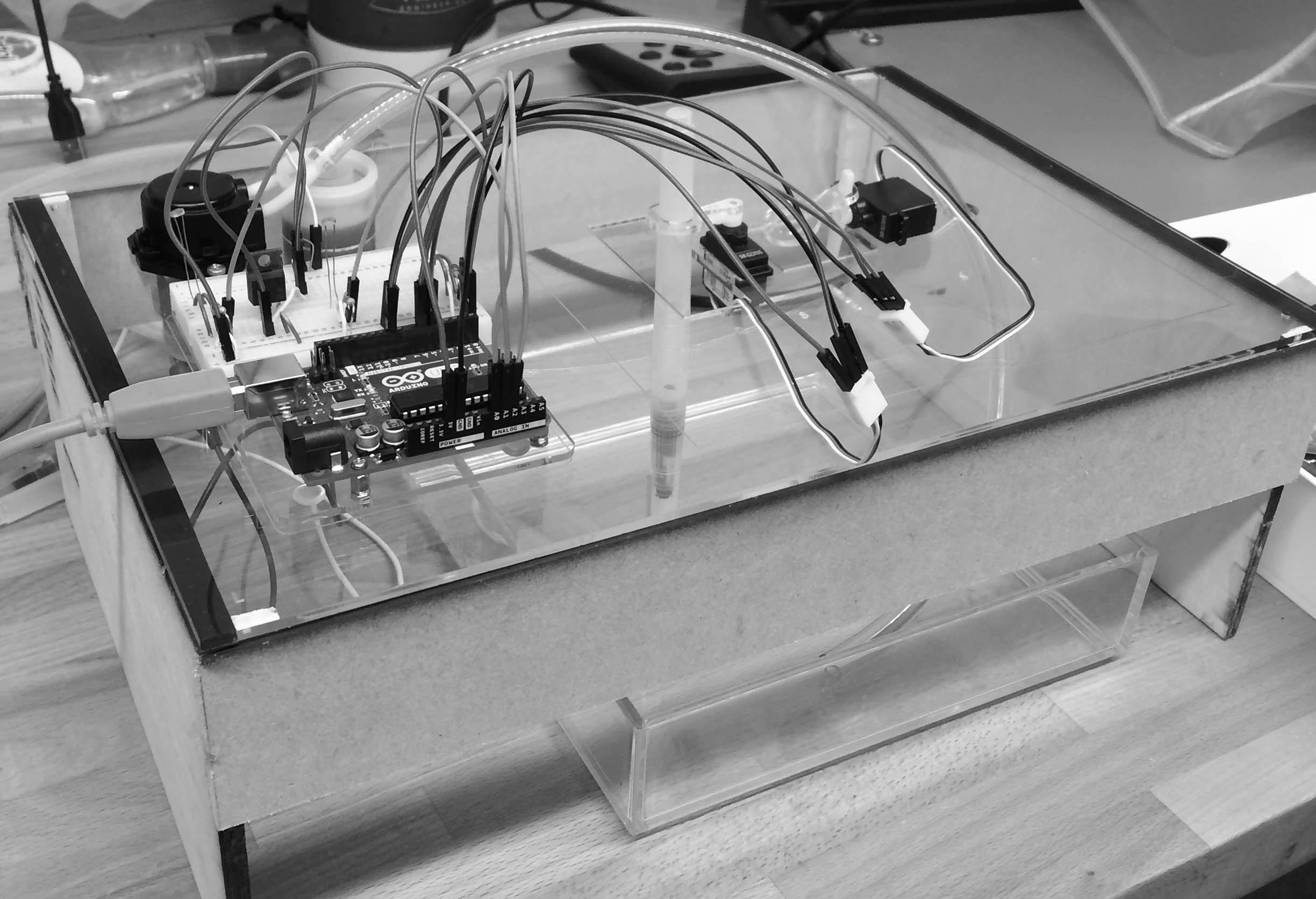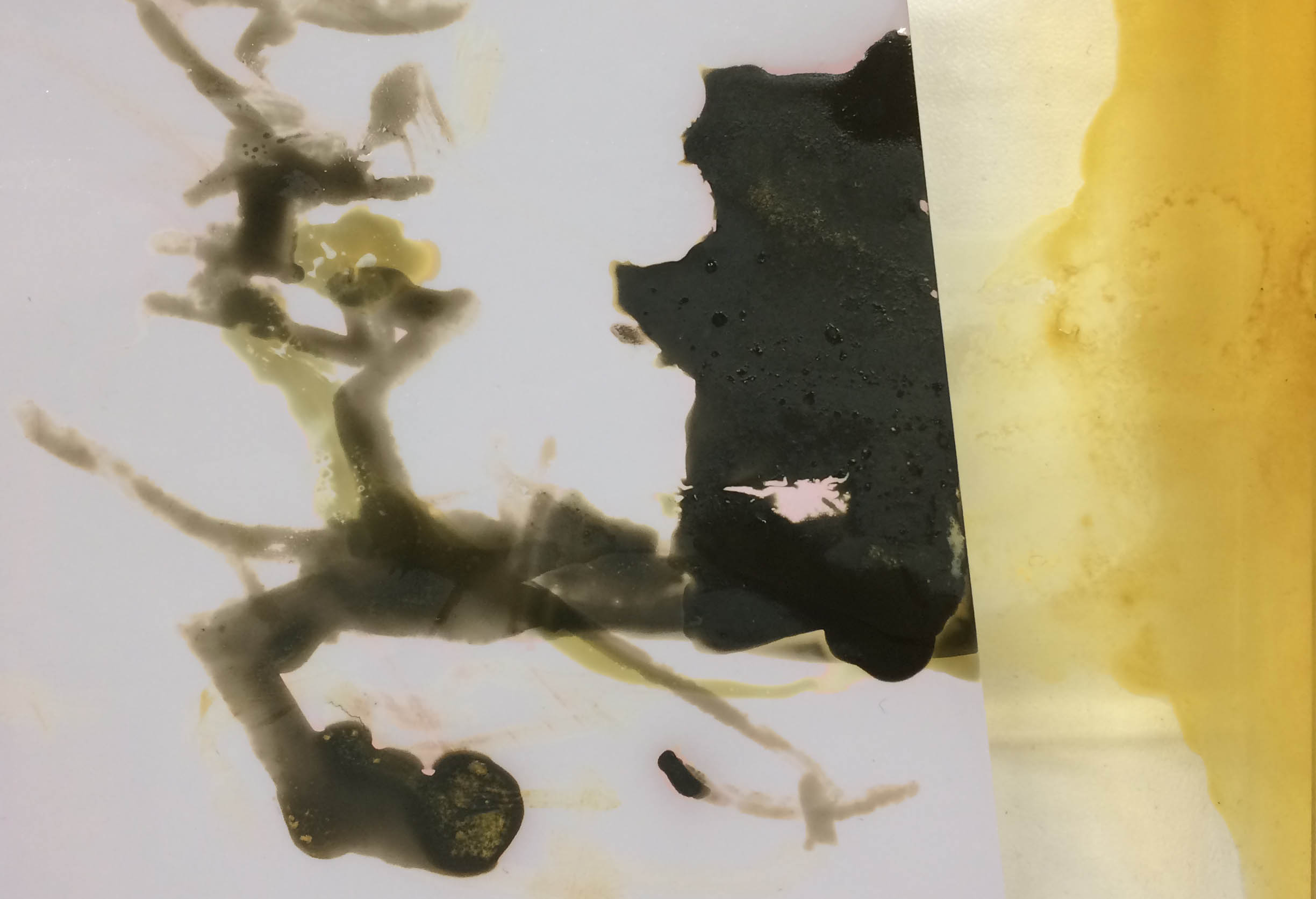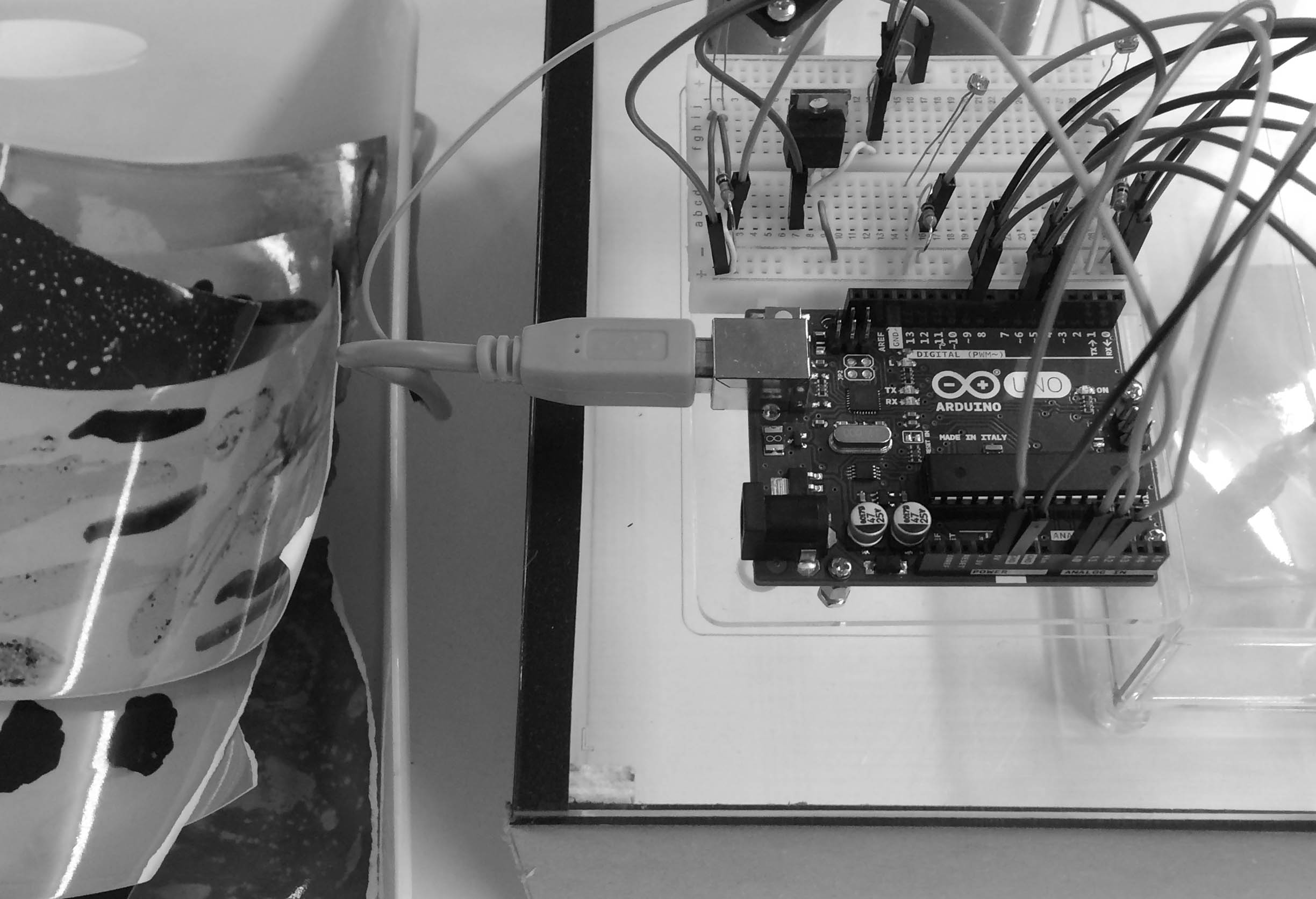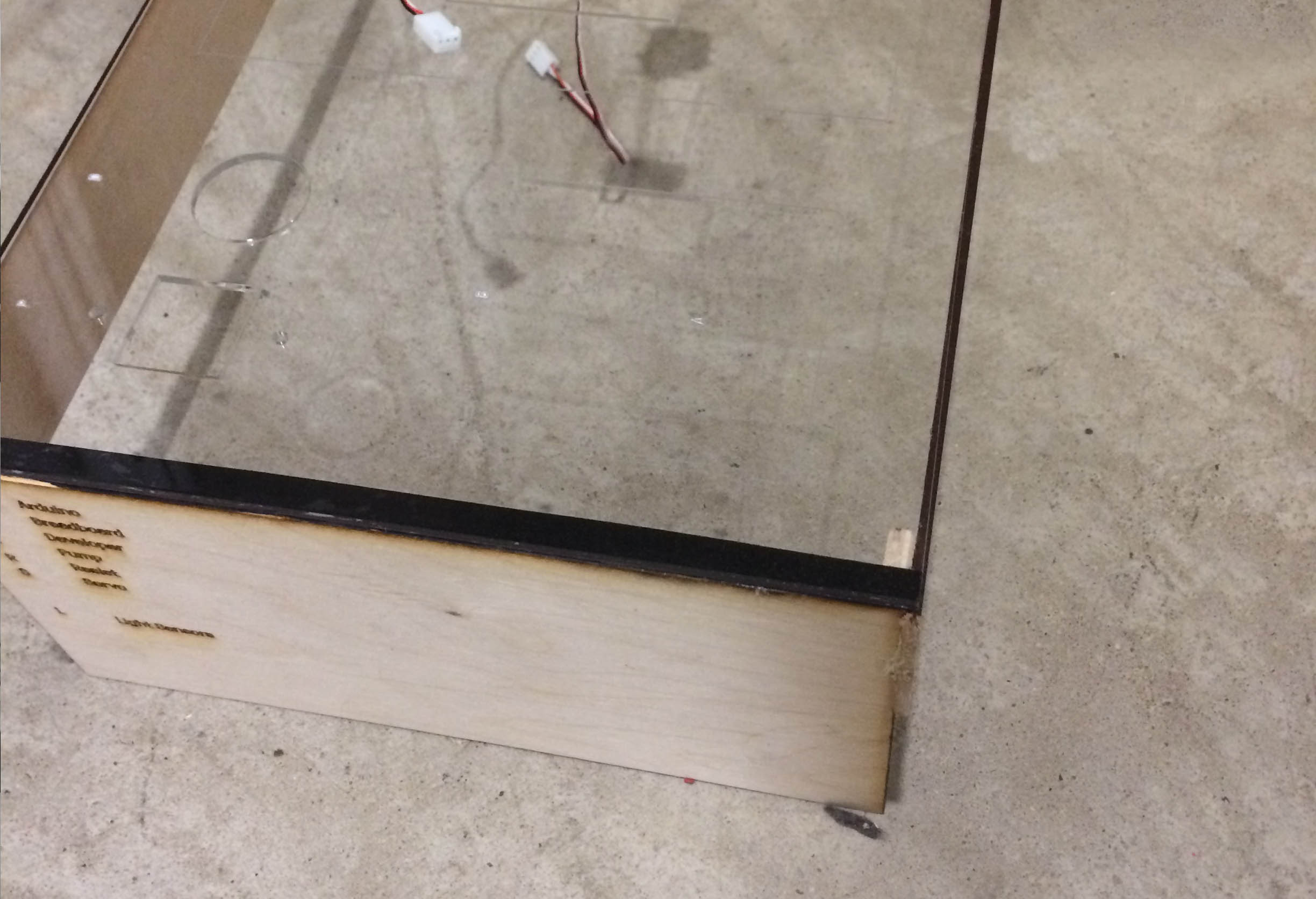The Chemigram Machine
The underlying research question - can technology alter or enhance traditional craft, and how does an incorporation of technology change the process or result? The chemigram is an analog photography method that lies somewhere between photography and art, a hybrid form in the middle. It is created by applying darkroom develop and fix chemicals to light sensitive photo paper, and in some cases a resist that prevents the light from accessing the paper it touches.
produced by: Isabel McLellan
Background and Concept
I wanted to see what machine generated chemigrams might look like. I was interested in the way that the paper itself acts as a sort of sense and react system, sensing the light and chemicals it is exposed to, reacting by changing colour. I wanted to create a system that mirrored this process in technological form.
The aesthetics of a hand made chemigram are the product of artistic expression, the aesthetics of a machine made chemigram might be more comparable to data, as it is a visual record of the light that forms its habitat. What I have created is a hybrid between the two, the hand moves the paper but the computer controls the tools, a collaborative process between a human and machine. The light can either be incidental or deliberate, it could be daylight, the incidental ambient lighting of a room, or the deliberate shining of a torch or a hand blocking the sensor.
The System
I designed what I viewed as a control panel that would hold the tools that would generate the image. It needed to be transparent, in order to allow the light to reach the paper through it. I used clear acrylic and designed cut out and engraved elements to allow for the placing of the tools.
In this case, the tools were three photocells connected to the Arduino; one controlling a peristaltic pump containing developer fluid (only switching on under extreme lighting conditions in order to not flood the paper, which would turn it entirely black), another controlling a watercolour brush with a hollow handle filled with developer fluid (giving a different effect to the pump, allowing for brush strokes in a curved motion due to the orientation of the servo), and a second servo oriented on its side also holding a brush, but filled with an oil resist (this would create brush strokes in straight rather than curved lines). To attach the brushes to the servo I designed and laser cut acrylic brush holders.
For the ‘chemicals’ I researched alternatives to the environmentally unfriendly and potentially hazardous traditional darkroom chemicals, discovering caffenol-c, a combination of caffeine, vitamin c and washing powder that when combined acts as a developer on photographic paper.
Development
In future development I would like to explore a fully automated version, and compare the outcomes of the three stages, human, hybrid and machine to observe the visual effects of the three methods in the resulting pictures. I would also like to be able to draw upon sensory data (light) from different locations for each element of the machine, one place for the developer, another for the resist, and another for the movement of the paper. This way the resulting piece of photo paper would be a collaborative record that blends these habitats into a single image.



































































